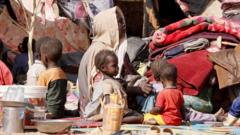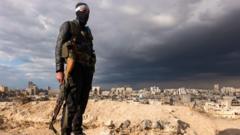Following the military coup over four years ago, various rebel groups in Myanmar have emerged, capturing approximately 15,000 soldiers. The treatment and management of these POWs present significant challenges for resistance forces operating under resource constraints.
Myanmar's Civil War: The Complex Landscape of Prisoners of War

Myanmar's Civil War: The Complex Landscape of Prisoners of War
As civil unrest continues in Myanmar, rebel forces are detaining thousands of prisoners while the military junta remains tight-lipped.
Tens of thousands of civilians in Myanmar have risen against the military junta since the coup that took place over four years ago. In this chaotic environment, many have allied with existing armed groups, while others have formed new rebel armies. Since the beginning of 2023, these opposition forces have attained a series of significant victories, leading to the capture of tens of thousands of soldiers, including high-ranking military officials and relatives of soldiers who were stationed on military bases that rebel forces have overtaken. Notably, many family members of soldiers have been released, but the fate of the captured military personnel remains uncertain.
According to data from People’s Goal, a nonprofit organization aiding army defectors, the resistance groups currently hold around 15,000 prisoners of war. The treatment and management of these prisoners are pressing concerns for the diverse rebel factions. With limited resources at their disposal, ensuring proper housing, feeding, and guarding of captured soldiers presents a significant challenge.
Many of these rebel factions have established makeshift prison camps across the territories they control. Some facilities house merely a few dozen POWs, while others can contain hundreds. In many cases, prisoners are required to contribute to their own upkeep, working to cultivate food and prepare meals for themselves. The situation underscores the tension and complexity within Myanmar's ongoing civil conflict, where humanitarian concerns often become entangled in the realities of war.
As the conflict persists, the question remains as to how both sides will manage their respective captives and what this means for the future of Myanmar's struggle for democracy and peace.



















